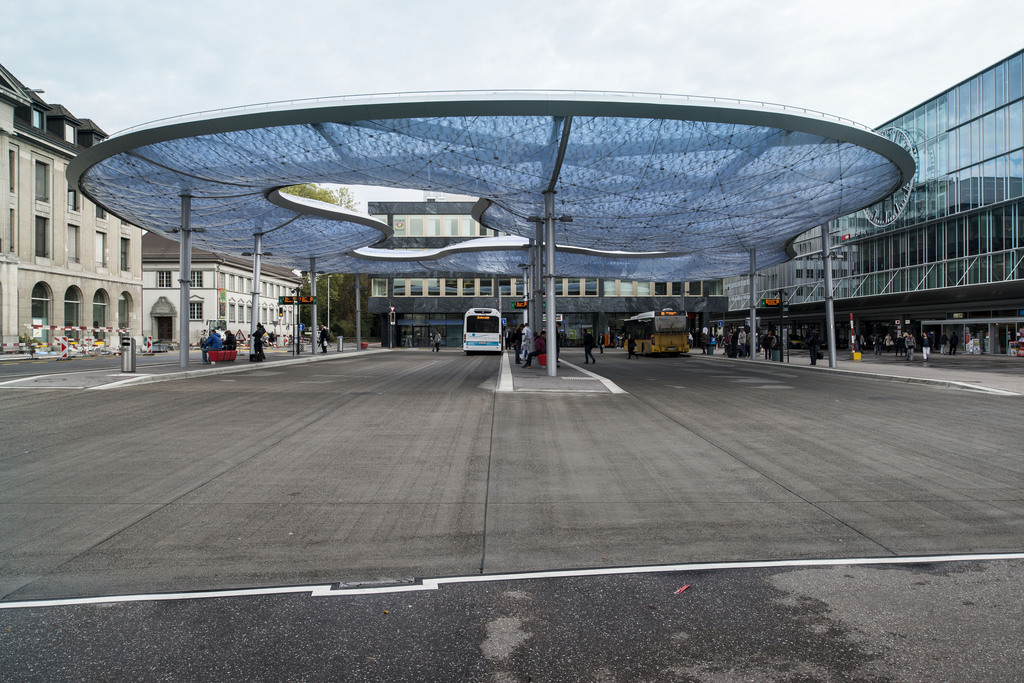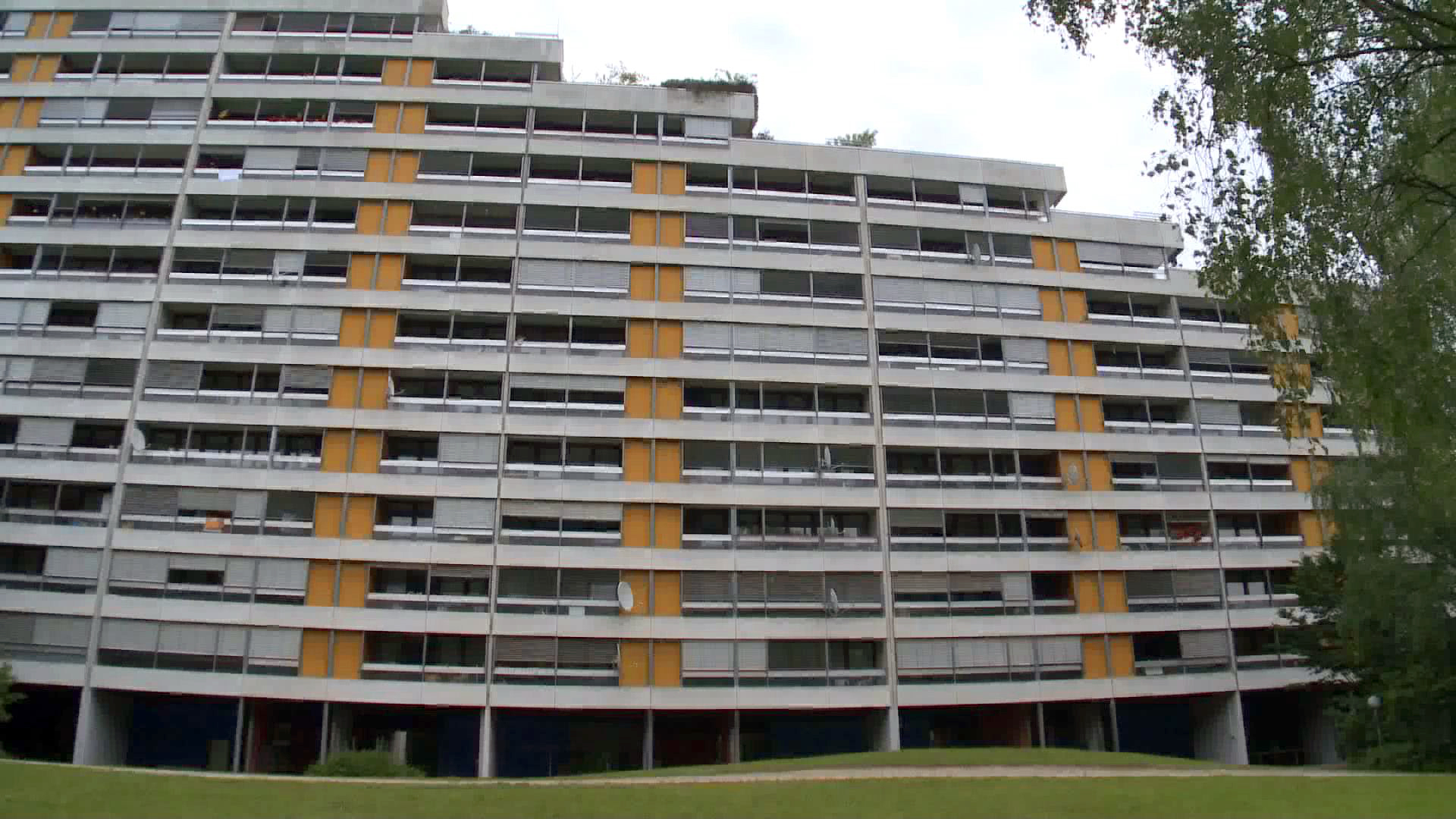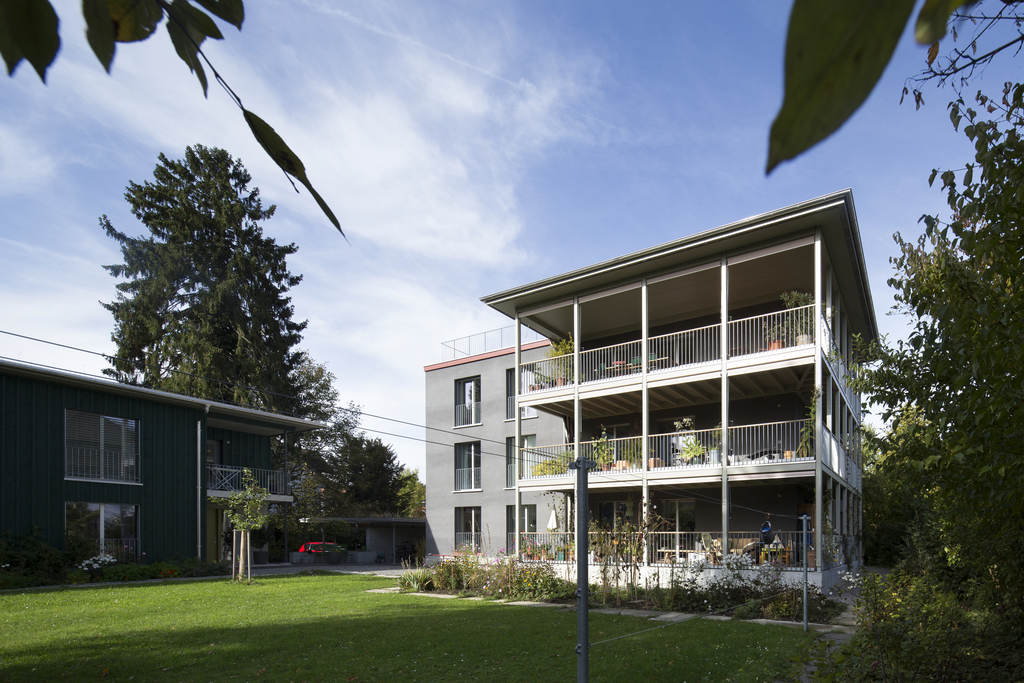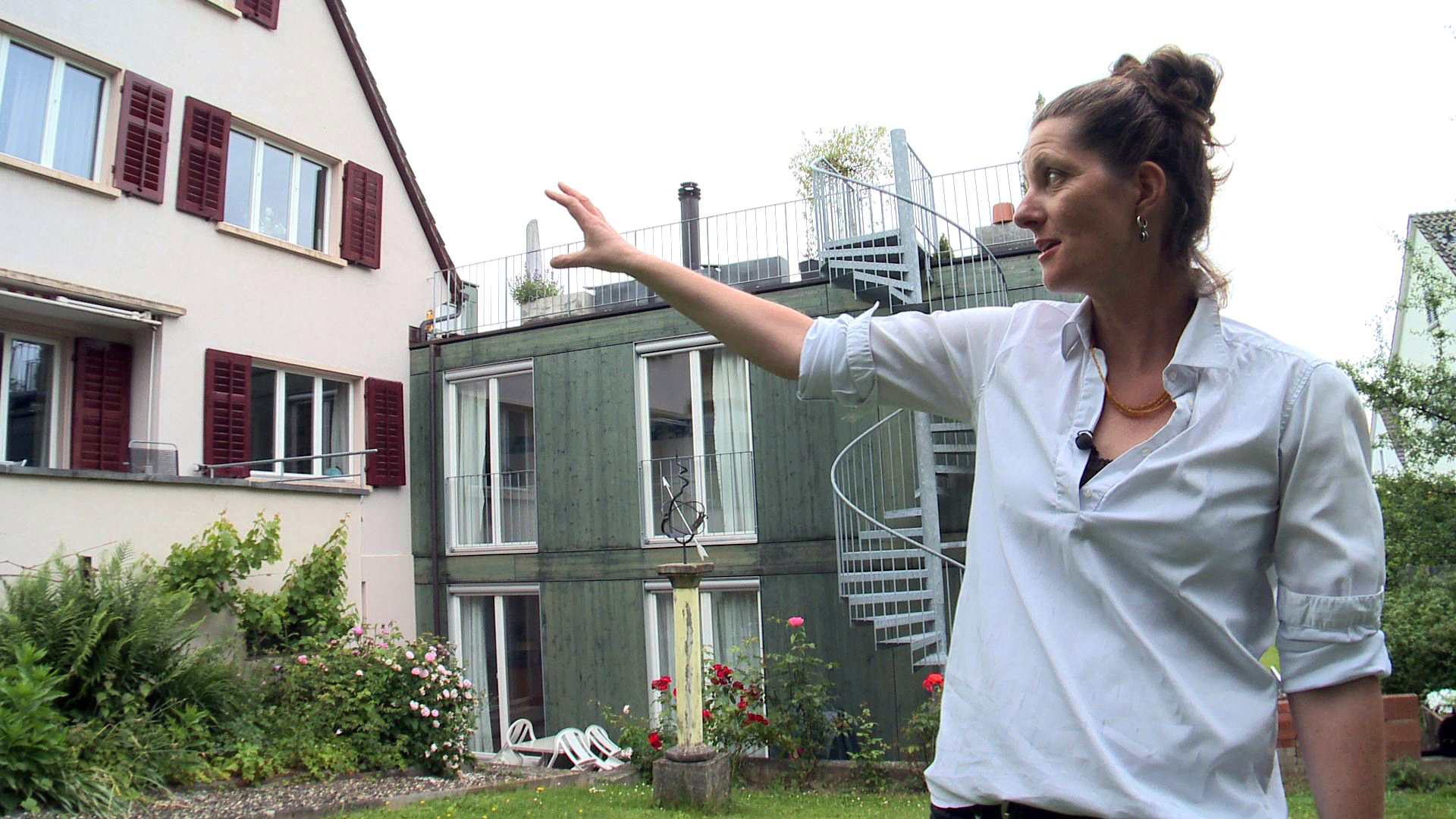
Aarau shows how to cope with sprawl

How can cities deal with growing numbers of commuters and the bane of concrete landscapes? The city of Aarau in central Switzerland is setting an example, having won the 2014 Wakker PrizeExternal link for developing and preserving its residential neighbourhoods.
It’s early morning in Aarau and already cars are blocked bumper to bumper on a road leading into the city. Passengers pile on and off trains and in the distance, cranes swing into action. In pace with the booming economy, Aarau is building and growing.
Located in the triangle formed by the larger cities of Zurich, Basel and Bern, Aarau lies at the centre of a sprawling urban area with 80,000 inhabitants. The city itself has 20,000 residents and 30,000 jobs. This is “unique nationwide and a mismatch,” explains architect Felix Fuchs. “That’s why we have been trying to build additional living space for years.”
More city apartments mean less commuting into the city, but they also require more space. However, instead of converting farmland, recreational areas and other green spaces into building zones – as is common elsewhere in Switzerland – Aarau has chosen to limit its populated areas over the past 20 years. Instead it’s made an effort to renew and upgrade existing neighbourhoods and convert former industrial sites.
For years already, Aarau has been implementing the general conditions of the revised Swiss urban planning act – approved by a large majority of voters in 2013 and in force since May 1, 2014.
The Telli tower block shows that Aarau was set on optimal use at a time when land was not as scarce as it is today. Built between 1970 and 1989, even then it was designed to be traffic-free.

More
Car-free zone
Skyscraper blown up
In the 25 years that Fuchs has served as Aarau’s municipal architect, he’s had a considerable impact on the city’s development and transformation. The 63-year-old is coming “slowly to the end of his period in office” but “key features of the planning efforts are visible,” he says, with a nod to buildings that are currently under construction or have recently received planning permission.
The central development area of Torfeld Süd is located on a former industrial site near Aarau’s train station. Until the spring of 2013, a 12-storey building stood at the entrance to the site. It was the first tower block in Switzerland to be blown up. The owner came to the conclusion that a new building was cheaper than renovations.

Football stadium takes centre stage
A year later, construction cranes are now on site. A new high rise is going up floor by floor and the next major phase of construction on the Torfeld Süd site is about to begin. It consists of the new football stadium for FC Aarau together with a shopping centre, multiplex cinema and apartments.
The location right in the centre was controversial and generated a lot of discussion. “It may be bold planning, but a stadium which pulls in the crowds belongs in the heart of the city and not on the outskirts in the middle of nowhere. It is part of public life and it is much better to get here by public transport,” says Fuchs.
As with any city, Aarau has its fair share of eyesores. To prevent any more, Fuchs has encouraged architecture competitions since he took office 25 years ago – “whenever it is possible and makes sense. It takes more time and effort but after a building project has been successfully completed, I’ve never met anyone who says it wasn’t worth it”.
Quiet residential areas
Around the station, which was built a few years ago, a new urban Aarau is growing – including the high-rise, stadium and other residential and commercial buildings in development. South of the railway are the city’s so-called garden neighbourhoods. These are quiet and now ‘traffic-calmed’ residential areas that developed between the end of the 19th and the middle of the 20th century.

More
An adjustable family home
“In terms of urban development, these green districts are of national significance,” said the Swiss Heritage Society, explaining the decision behind this year’s award of the Wakker Prize. “In order to preserve the appearance of these districts, the city of Aarau not only influences the design of buildings but has also recognised the importance of enclosures, plantings and street spaces for the character of the neighbourhood.”
These neighbourhoods are very popular, so owners and investors are eager to launch new building, extension and renovation projects. The city acts in an advisory capacity and aims for new buildings to “fit proportionally into the existing settlement structure” says Fuchs. He admits that there have been accidents in the form of new buildings which have not fitted in because they turned out too big or were surrounded by huge asphalt parking lots. “But the odd unfortunate situation has also raised awareness among the population to the fact that we need to proceed carefully with new buildings.”
The old town has been restored in recent years, spruced up and freed from private transport. The city stream no longer flows underground. It is now as much a part of the cityscape as the restored cobblestones. Aarau has changed and grown without infringing upon the green and open spaces.
Aarau is not considered a particularly attractive city by the rest of Switzerland. Fuchs puts that down to being overshadowed by the big centres of Zurich and Basel, which are less than 40 kilometres away. “The city always hides its light under a bushel. Why? I still can’t explain it. There’s a lot of self-criticism and moaning. Perhaps the Wakker Prize will help us to build our self-confidence.”
Wakker Prize
The Swiss Heritage Society (SHS) awards the annual Wakker Prize to a municipality for the development and preservation of its architectural heritage. Aarau will receive the 2014 prize on June 28.
The prize money, CHF20,000 ($22,365), is largely symbolic because the value of the award lies in public recognition of an exemplary achievement.
In 1972, the first-ever Wakker Prize was funded by a bequest from Geneva businessman Henri-Louis Wakker to the Swiss Heritage Society. Since then, further legacies have made it possible to continue awarding the prize up to the present day.
The towns of Stein am Rhein, Guarda and Ernen won the prize in the 1970s at a time when the preservation of historic centres was not self-evident.
The focus today is on communities which carefully develop their settled areas with a contemporary vision. This includes promoting design quality in new buildings, dealing respectfully with historic structures and up-to-date local planning.
(Translated from German by Vincent Landon)

In compliance with the JTI standards
More: SWI swissinfo.ch certified by the Journalism Trust Initiative



























You can find an overview of ongoing debates with our journalists here . Please join us!
If you want to start a conversation about a topic raised in this article or want to report factual errors, email us at english@swissinfo.ch.